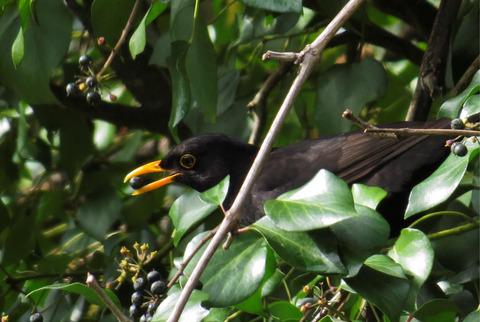Our official English website, www.x-mol.net, welcomes your feedback! (Note: you will need to create a separate account there.)
Species temporal persistence promotes the stability of fruit–frugivore interactions across a 5‐year multilayer network
Journal of Ecology ( IF 5.5 ) Pub Date : 2020-03-20 , DOI: 10.1111/1365-2745.13391 José M. Costa 1, 2 , Jaime A. Ramos 2 , Sérgio Timóteo 1 , Luís P. Silva 1, 2 , Ricardo S. Ceia 2 , Ruben H. Heleno 1
中文翻译:

物种的时间持久性促进了跨5年多层网络的水果与果蝇相互作用的稳定性
更新日期:2020-03-20
Journal of Ecology ( IF 5.5 ) Pub Date : 2020-03-20 , DOI: 10.1111/1365-2745.13391 José M. Costa 1, 2 , Jaime A. Ramos 2 , Sérgio Timóteo 1 , Luís P. Silva 1, 2 , Ricardo S. Ceia 2 , Ruben H. Heleno 1
Affiliation

|
- Biological communities are intrinsically dynamic, with species and interactions changing over time. However, the temporal dynamics of species interaction networks is usually assessed using independent ‘snapshot’ networks, which may provide an incomplete representation of ecological processes. The use of temporal multilayer networks, where networks (i.e. layers) are formally interconnected via interlayer links, can circumvent such limitation, allowing for a more realistic characterization of community structure and better predictions regarding long‐term processes that rely on species interactions, such as seed dispersal.
- We used a 5‐year bird–seed dispersal dataset to explore species and interaction turnover across years, network structure variability and the relationship between species topological roles on each year and their temporal persistence (i.e. species activity). We then implemented a temporal multilayer network approach to compute overall species versatility (centrality) and to reveal the modular structure of the 5‐year multilayer network using changes in species relative abundances as proxies for the interlayer links between time‐sequential networks.
- Network topology remained relatively constant across years and interaction turnover was mostly due to true rewiring (new links) between species. Overall, birds, some of which migratory, were temporally more reliable than fleshy‐fruited plants. Interestingly, species present across more years tended to be more important to the structure of each years' seed dispersal network, independently of their relative abundance. The multilayer analysis identified four modules of tightly interacting species, all of which spanning across the 5 years, and with a greater stability in the composition of bird species when compared to plants.
- Synthesis. Bird and plant species that are present in more years in the seed dispersal network were also disproportionally important in each year, forming a core of temporally reliable interacting partners for transient species in the network.
中文翻译:

物种的时间持久性促进了跨5年多层网络的水果与果蝇相互作用的稳定性
- 生物群落本质上是动态的,物种和相互作用随着时间而改变。但是,通常使用独立的“快照”网络评估物种相互作用网络的时间动态,这可能无法完整地表示生态过程。使用时间多层网络(其中网络(即各层)通过层间链接进行正式互连)可以规避此类限制,从而可以更真实地描述群落结构,并更好地预测依赖物种相互作用的长期过程,例如种子传播。
- 我们使用了一个为期5年的鸟种分布数据集,研究了跨年的物种和相互作用转换,网络结构变异性以及每年物种拓扑角色与其时间持久性(即物种活动)之间的关系。然后,我们实施了时间多层网络方法来计算总体物种多功能性(中心性),并使用物种相对丰度的变化作为时间序列网络之间层间链接的代理来揭示5年多层网络的模块化结构。
- 网络拓扑结构多年来一直保持相对恒定,并且交互转换主要是由于物种之间真正的重新布线(新链接)所致。总体而言,鸟类(其中一些具有迁徙性)在时间上比果肉植物更可靠。有趣的是,存在多年的物种,无论其相对丰度如何,往往对每一年种子传播网络的结构都更为重要。多层分析确定了紧密相互作用的物种的四个模块,这些模块都跨越了5年,与植物相比,鸟类物种的组成具有更大的稳定性。
- 综合。在种子传播网络中存在更多年的鸟类和植物物种在每一年中也都具有不成比例的重要性,形成了网络中瞬态物种在时间上可靠的相互作用伙伴的核心。



























 京公网安备 11010802027423号
京公网安备 11010802027423号